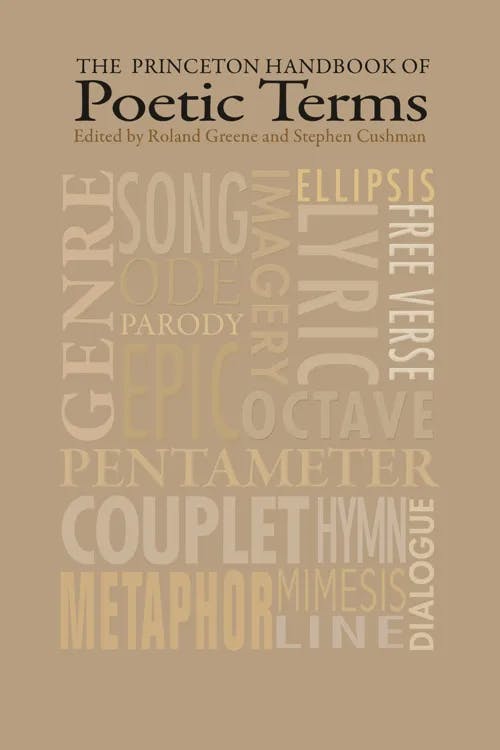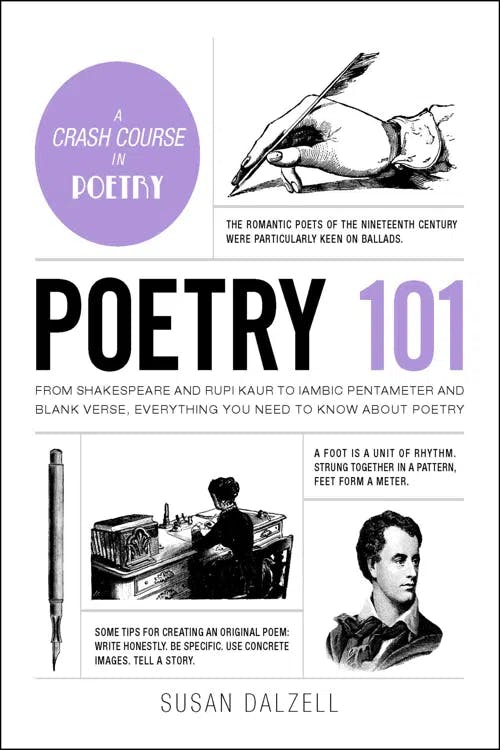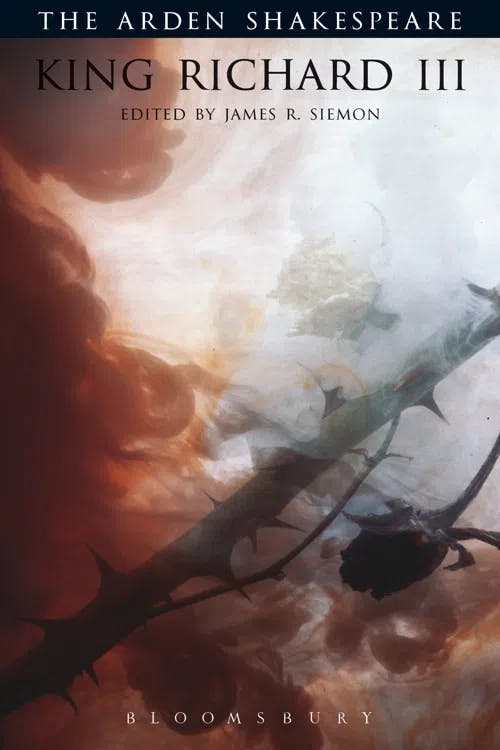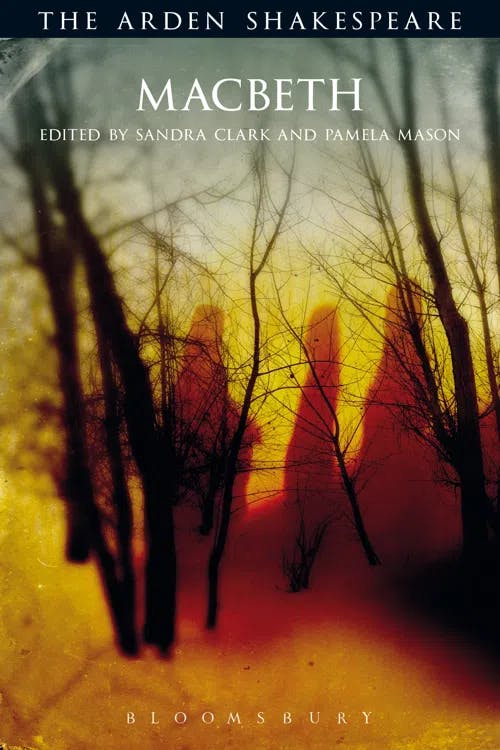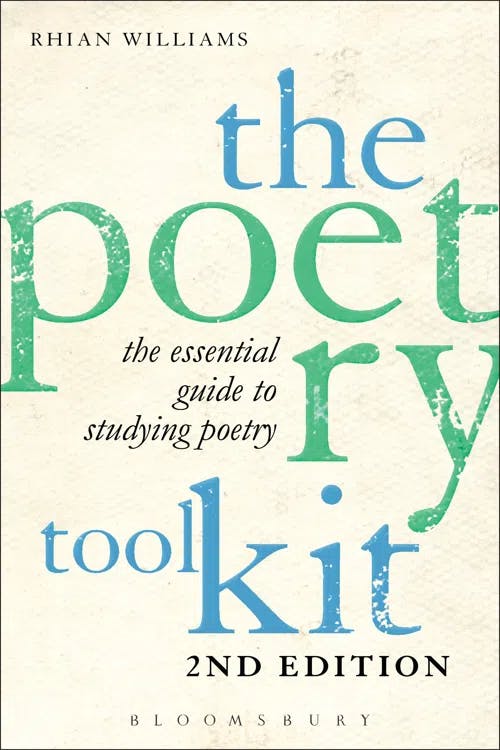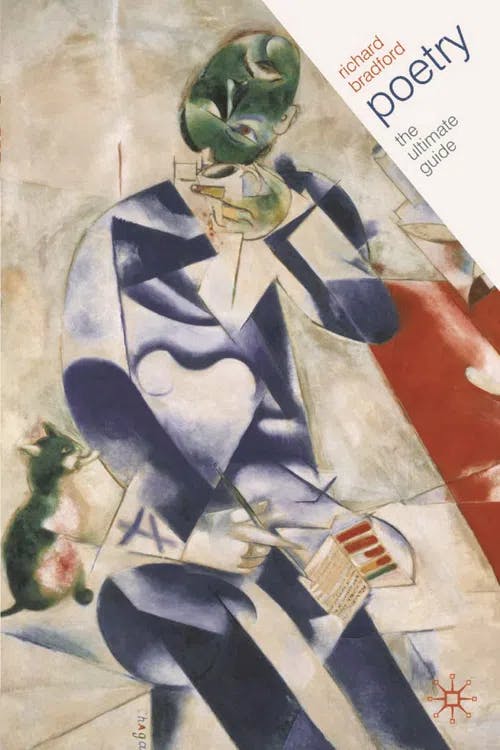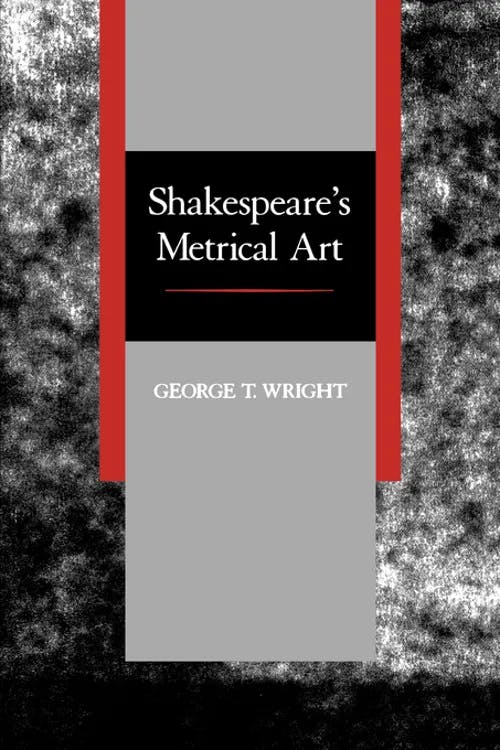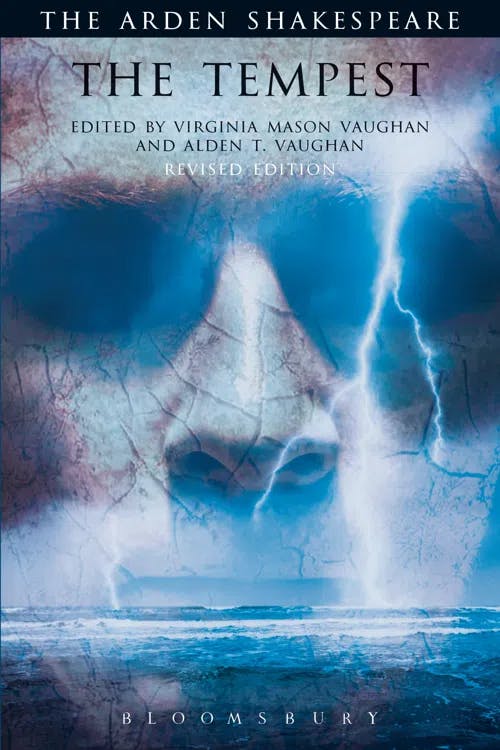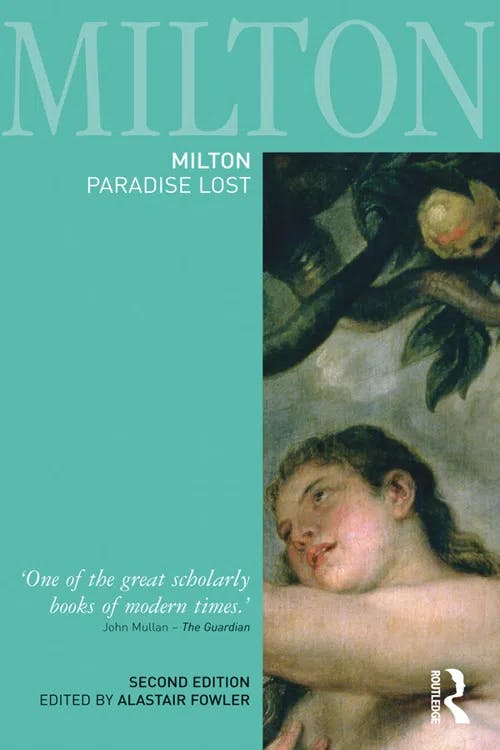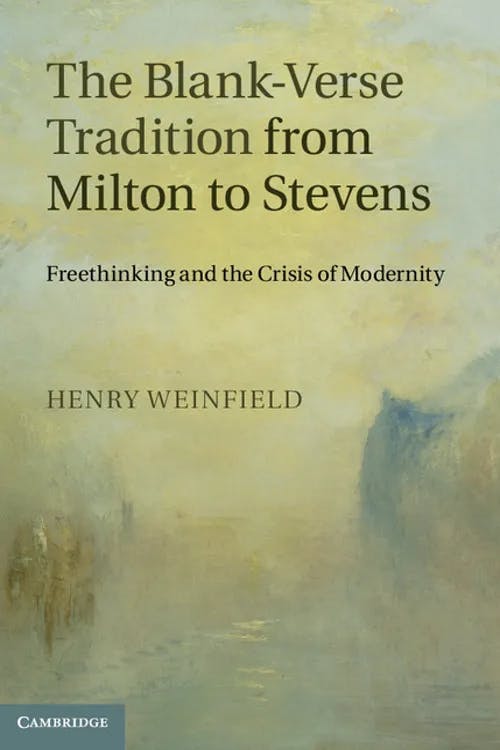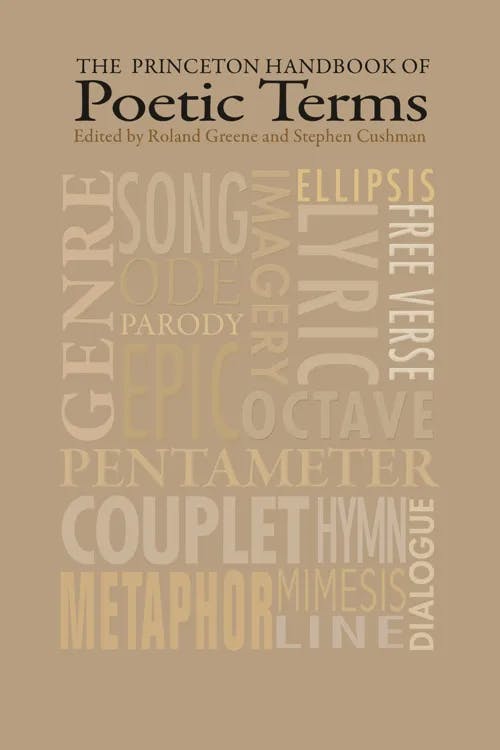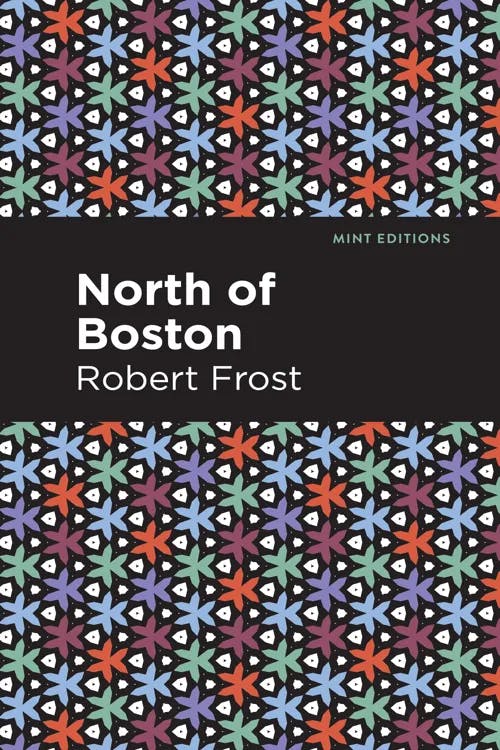What is Blank Verse?
MA, English Literature (University College London)
Date Published: 25.01.2024,
Last Updated: 01.02.2024
Share this article
Defining blank verse
For such a well-known literary form, the term “blank verse” may seem vaguely mysterious. What does “blank” mean in this context? Blank verse is simply referred to as “blank” because it does not follow a rhyming scheme. It does still follow a regular metrical pattern, however, and it often employs a range of other poetic devices. E. R. Weismiller explains that,
Blank verse is a term for unrhymed lines of poetry, always in lines of a length considered appropriate to serious topics and often in the most elevated, canonical meter in a given national prosody. (“BLANK VERSE I. Italian,” The Princeton Handbook of Poetic Terms, 2016)
Edited by Roland Greene and Stephen Cushman
Blank verse is a term for unrhymed lines of poetry, always in lines of a length considered appropriate to serious topics and often in the most elevated, canonical meter in a given national prosody. (“BLANK VERSE I. Italian,” The Princeton Handbook of Poetic Terms, 2016)
Blank verse has been harnessed by many of English literature’s most famous figures in a variety of striking ways. From Christopher Marlowe, William Shakespeare, and John Milton, to William Wordsworth, W.B. Yeats, and Robert Frost, blank verse has shifted and evolved to capture their poetic and dramatic visions. Blank verse was dominant for centuries and continues to be employed today.
Blank verse has (predominantly) appeared in the form of iambic pentameter, which stands as “the most frequently used line in English poetry” (Richard Bradford, Poetry: The Ultimate Guide, 2012). Lines of iambic pentameter are ten syllables in length, formed of five iambic feet (which have two syllables each). As T.V.F. Brogan and S.S. Bill explain,
Iambic meter is based on the iamb, a metrical foot consisting of a short or unstressed syllable followed by a long or stressed syllable.
[...]
Iambic was thought in antiquity to be the rhythm nearest to common speech.
(“IAMBIC,” The Princeton Handbook of Poetic Terms, 2016)
A useful memory aid is that, if we say “iamb” out loud, we can hear exactly where the stress on each syllable is put: “iAMB.” The iambic rhythm is also commonly expressed as “da DUM da DUM da DUM da DUM da DUM” — and from counting the syllables, we can see that this line is iambic pentameter.
Blank verse does not necessarily take the form of iambic pentameter, however, despite the dominance of this metrical pattern. Blank verse and iambic pentameter are often used synonymously, but (in theory) blank verse can follow any metrical pattern — as long as it is regularly applied. As Susan Dalzell lays out in Poetry 101 (2018),
There are five basic kinds of feet:
1. Iamb (Unaccented-Accented)
2. Trochee (Accented-Unaccented)
3. Spondee (Accented-Accented)
4. Anapest (Unaccented-Unaccented-Accented)
5. Dactyl (Accented-Unaccented-Unaccented)
Susan Dalzell
There are five basic kinds of feet:
1. Iamb (Unaccented-Accented)
2. Trochee (Accented-Unaccented)
3. Spondee (Accented-Accented)
4. Anapest (Unaccented-Unaccented-Accented)
5. Dactyl (Accented-Unaccented-Unaccented)
Blank verse could theoretically employ any one of these feet, but the iamb has dominated. As the term “blank verse” has come to be strongly associated with iambic pentameter in critical parlance, this guide will be focusing on examples of blank verse which are largely written in iambic pentameter.
Even where iambic pentameter is dominant, however, this does not mean that every line is metrically perfect — as we will see, poets commonly use iambic pentameter as a baseline from which they regularly diverge, adding and subtracting extra syllables, and employing various stresses for poetic and dramatic effect. Trochaic feet, for example, are the opposite of iambic feet: with the stressed syllable preceding, rather than following, the unstressed syllable. In this example from Shakespeare’s Richard III (c. 1590s), we can see that the first foot is trochaic (with the stress on the first syllable) — inverting the more regular iambic rhythm which then follows:
Now is the winter of our discontent
Made glorious summer by this son of York [...].
(c. 1590s, [2014])
William Shakespeare
Now is the winter of our discontent
Made glorious summer by this son of York [...].
(c. 1590s, [2014])
Prose can also be present, along with moments of rhyming verse — meaning that these sections are not technically blank verse at all. A famous example of this can be seen in Shakespeare’s Macbeth (1606), with the witches’ habit of speaking in haunting rhyming couplets:
Fair is foul, and foul is fair,
Hover through the fog and filthy air.
(1606, [2015])
William Shakespeare
Fair is foul, and foul is fair,
Hover through the fog and filthy air.
(1606, [2015])
Here, the lines are also in trochaic tetrameter — a divergence from iambic pentameter which perhaps emphasizes the witches’ unnatural nature and their destabilizing influence on the events, characters, and even meter of the play. The meter itself is turned upside down, matching the witches’ words (“Fair is foul, and foul is fair”).
To summarize, the distinguishing feature of blank verse is that it is a form of poetry which does not rhyme but still follows a regular meter. Blank verse should not be confused with free verse, however. Free verse does not rhyme, either, but (unlike blank verse) it also does not follow any kind of set metrical pattern at all: in theory, it is completely “free” of these concerns.
In the following sections, we will dig into the features of blank verse and hear from both proponents and opponents of the form. We will also explore a range of examples from blank verse’s long and varied history — including more modern examples.
The key features of blank verse
In The Poetry Toolkit (2013), Rhian Williams identifies “the advantage of blank verse”:
it holds lines together with regularity and a sometimes consoling, sometimes thundering, sometimes merely entertaining consistency, but it also accommodates the variations of human speech.
Rhian Williams
it holds lines together with regularity and a sometimes consoling, sometimes thundering, sometimes merely entertaining consistency, but it also accommodates the variations of human speech.
Blank verse, while maintaining poetic grandeur, is prized for its more naturalistic qualities: representing a hybrid compromise between poetry and everyday speech. As Bradford explains,
Before Milton’s Paradise Lost (1667) legitimized blank verse as a vehicle for non-dramatic poetry, the form was treated by consensus as a hybrid. It was poetic in the sense that it adhered to the abstract template of the iambic pentameter and by custom its use was accompanied by an unprosaic abundance of rhetorical devices. The absence of rhyme and, in general, other sound patterns lent a little credibility to the speaker on stage, someone who, if they conversed with others or addressed the audience in couplets or stanzas, would seem ostentatiously unreal. (2010)
Richard Bradford
Before Milton’s Paradise Lost (1667) legitimized blank verse as a vehicle for non-dramatic poetry, the form was treated by consensus as a hybrid. It was poetic in the sense that it adhered to the abstract template of the iambic pentameter and by custom its use was accompanied by an unprosaic abundance of rhetorical devices. The absence of rhyme and, in general, other sound patterns lent a little credibility to the speaker on stage, someone who, if they conversed with others or addressed the audience in couplets or stanzas, would seem ostentatiously unreal. (2010)
Clearly, most of us are not in the habit of speaking in rhyming couplets. Although we do not often speak in perfect iambic pentameter either, blank verse does more closely mimic the rhythm of our everyday speech. George T. Wright argues,
Kyd, Marlowe, and Shakespeare all found ways to connect the patterned verse of drama with a more speechlike language. Eventually, a new style could use some of the old manner's formal features to extend the range, variety, and convincingness of the characters' speech tones, to make characters respond with spirit to each other's words, to distinguish characters by their speeches, and to achieve a grandiloquence beyond the reach of either the earlier inflated verse or ordinary spoken language. (1988)
George T. Wright
Kyd, Marlowe, and Shakespeare all found ways to connect the patterned verse of drama with a more speechlike language. Eventually, a new style could use some of the old manner's formal features to extend the range, variety, and convincingness of the characters' speech tones, to make characters respond with spirit to each other's words, to distinguish characters by their speeches, and to achieve a grandiloquence beyond the reach of either the earlier inflated verse or ordinary spoken language. (1988)
Due to the wide variety of works produced in blank verse, it has been praised for its versatility in the hands of “skilled practitioners,” who can shape the verse to suit “a vast range of purposes” (Williams, 2013). Although it is still (theoretically) bound to a regular meter, blank verse is not necessarily a limitation on poetic expression. Wright suggests, for example, that "the metrical principle underlying the art of Shakespeare's dramatic verse is that of great freedom within great order"(1988). Wright goes further, and argues that iambic pentameter in particular possesses a quality of mysterious power:
iambic pentameter [...] usually conveys a sense of complex understanding, as if the speakers of such lines were aware of more than they ever quite say, or as if there were more in their speeches than even they were aware of. If the language of everyday life or even the language of other forms of poetry seems usually to leave untouched, unsounded, certain depths of human experience, iambic pentameter has seemed to centuries of poets and listeners the poetic form most likely to reach these depths and to make their resonances audible. (1988)
The iambic pentameter of blank verse may not be a merely stylistic choice: in the view of critics such as Wright, it is a powerful artistic ally in our quest to explore the depths of human experience.
Blank verse highlights
It is sadly not possible to explore every example of blank verse here, but, in the following section, we will be skipping across the centuries to highlight some of its most significant and influential appearances.
Early blank verse and Christopher Marlowe
The emergence of recognisable blank verse is usually traced to Italy. Weismiller writes that
The phenomenon first appeared in [Italian] poetry of the 13th c. with “Il Mare Amoroso” (The Sea of Love), an anonymous poem composed of 334 unrhymed endecasillabo verses. In the [Renaissance], this form was transplanted to England as the unrhymed decasyllable or iambic pentameter. (2016)
The first practitioner of blank verse in the English language was Henry Howard, the Earl of Surrey, who “devised it for his translations of Virgil’s Aeneid (c. 1540),” and “it soon became the preferred mode for drama written for the Elizabethan and Jacobean stage” (Williams, 2013). The very first example of dramatic blank verse in English is Gorboduc (1561), written by Thomas Norton and Thomas Sackville, paving the way for Marlowe’s innovation of the form:
the artificial regularity of Norton’s verse came to characterize [English] dramatic poetry until Christopher Marlowe came fully into his powers. Marlowe showed what rhetorical and tonal effects blank verse was capable of [...]. (T.V.F. Brogan, R.B. Shaw, E.R. Weismiller, and G.T. Wright, “BLANK VERSE II. English,” The Princeton Handbook of Poetic Terms, 2016)
Marlowe’s acclaimed transformation of dramatic blank verse catapulted it to center stage, laying the groundwork for other Elizabethan dramatists to follow (including Shakespeare). Through such popular plays as Tamburlaine the Great (c. 1587–88), The Jew of Malta (c. 1590), and Doctor Faustus (c. 1592–93) (collected in Christopher Marlowe: Four Plays, 2014), Wright argues that “it was Marlowe who first loosened the rigidities of dramatic blank verse,” and that “The desires of Tamburlaine, Barabbas, and Faustus are made convincing through a dramatic verse of unprecedented power and excitement” (1988).
For more on Marlowe, see Christopher Marlowe, Renaissance Dramatist (2008).
William Shakespeare
Shakespeare is, of course, the most celebrated practitioner of blank verse in history. Blank verse is central to his iconic plays, but his employment of blank verse here is not as uniform and predictable as might be expected (as we saw earlier in the guide):
Blank verse is always mixed with other metrical modes (e.g., rhymed verse, songs) and (except for Richard II and King John) with prose; two plays offer more rhymed verse than blank (Love’s Labours Lost and A Midsummer Night’s Dream), and seven plays (two hists. and five middle-period comedies) are largely or predominantly written in prose. (Brogan, Shaw, Weismiller, and Wright, 2016)
The dynamic between blank verse and prose is particularly interesting in Shakespeare’s plays, as they represent the higher and lower registers of speech and class respectively:
The cultural indicators of blank verse are seen across Shakespeare’s plays [...] blank verse is used for meditative, solemn or reflective passages. In comedies such as Twelſth Night, characters move between employing blank verse in conversation with those they address equally (on subjects such as love, philosophy and melancholy) and falling into prose when addressing employed fools or other members of the household on matters of everyday business, bawdiness or jesting. (Williams, 2013)
As Bradford summarizes, prose “is the language of Shakespeare’s lower orders,” whereas verse is “the badge of cultural sophistication” (2013).
Shakespeare is noted for his subtle deployment and evolution of blank verse throughout his life. Particularly in his later career, Shakespeare’s blank verse was marked by its free divergence from the baseline of iambic pentameter: line lengths and metrical stresses vary, and the use of enjambment becomes increasingly widespread and complex. Wright argues that
in Shakespeare's later plays (from, say, Troilus and Cressida to The Tempest) we rarely encounter a passage of more than a few lines that does not break the basic pattern in some way. The regular pentameter remains a norm, but a norm from which departures, in certain permissible patterns, are also normal. (1988)
The result is blank verse that possesses “great flexibility, variety, melody, and speechlike force” (Brogan, Shaw, Weismiller, and Wright, 2016). To see this in practice, you can examine one of the most famous passages from The Tempest (c. 1610–11) here below. As you read through it, keep an eye out for the variations from iambic pentameter which may signal a “disturbing” of “the metrical, moral, and psychological peace” (Wright, 1988):
Our revels now are ended. These our actors,
As I foretold you, were all spirits and
Are melted into air, into thin air;
And — like the baseless fabric of this vision —
The cloud-capped towers, the gorgeous palaces,
The solemn temples, the great globe itself,
Yea, all which it inherit, shall dissolve,
And like this insubstantial pageant faded,
Leave not a rack behind. We are such stuff
As dreams are made on, and our little life
Is rounded with a sleep. [...]
(The Tempest, c. 1610–11, [2014])
William Shakespeare
Our revels now are ended. These our actors,
As I foretold you, were all spirits and
Are melted into air, into thin air;
And — like the baseless fabric of this vision —
The cloud-capped towers, the gorgeous palaces,
The solemn temples, the great globe itself,
Yea, all which it inherit, shall dissolve,
And like this insubstantial pageant faded,
Leave not a rack behind. We are such stuff
As dreams are made on, and our little life
Is rounded with a sleep. [...]
(The Tempest, c. 1610–11, [2014])
John Milton
John Milton remains one of the most revered and influential writers of blank verse. Just as Marlowe and Shakespeare had transformed drama with their blank verse, Milton set out to transform epic poetry with the blank verse of Paradise Lost (1667). As Bradford argues, Paradise Lost is “arguably the most important epic, narrative poem in English”:
Paradise Lost tells the story, in 12 books, of the creation of mankind and the reasons for our ongoing perilous state. The poem is essentially the book of Genesis in English verse and Milton had set himself a gargantuan task. (2010)
For such a monumental undertaking, Milton felt that blank verse was necessary — as he explains in his own words:
The measure [of Paradise Lost] is English heroic verse without rhyme, as that of Homer in Greek, and of Virgil in Latin; rhyme being no necessary adjunct or true ornament of poem or good verse, in longer works especially [...]. (Milton, “The Verse” [added in 1668], in Paradise Lost, 1667, [2014])
Edited by Alastair Fowler
The measure [of Paradise Lost] is English heroic verse without rhyme, as that of Homer in Greek, and of Virgil in Latin; rhyme being no necessary adjunct or true ornament of poem or good verse, in longer works especially [...]. (Milton, “The Verse” [added in 1668], in Paradise Lost, 1667, [2014])
Rhyme, Milton writes, is a “hindrance” and “constraint” which has stopped poets from expressing “many things” (1668, [2014]). Faced with the challenge of giving voice to angels, demons, and even God, Milton alighted on blank verse as his poetic vehicle of choice. Bradford argues that Milton’s highly individualistic deployment of blank verse allowed him to avoid “the repetitive formulaic nature” of other, more rigid poetic modes, which would have “ebbed away at each character’s claim upon selfhood” (2010).
In The Blank-Verse Tradition from Milton to Stevens (2012), Henry Weinfield argues that blank verse gave Milton’s poetic imagination the license to roam:
Blank verse, situated as it is between more formally rhymed verse and prose, and hence [...] between the poetic and the prosaic registers and realms of experience, gives him the freedom to wander where he will without losing his way [...]. (2012)
Henry Weinfield
Blank verse, situated as it is between more formally rhymed verse and prose, and hence [...] between the poetic and the prosaic registers and realms of experience, gives him the freedom to wander where he will without losing his way [...]. (2012)
Weinfield highlights Milton’s mastery of “enjambment, a shifting caesura, metrical variations of all kinds,” “syntax,” “and all manner of other techniques” (2012). Brogan, Shaw, Weismiller, and Wright argue that this is crucial in allowing Milton to construct his epic sweeps of thought:
For his subject in Paradise Lost, he needed a dense, packed line, as various as possible in movement within the limits set by broadly understood but absolute metricality; at the same time, he needed a syntax complex and elaborate enough to overflow line form, to subordinate it to larger forms of thought, appropriately varied in the scope of their articulation [...]. (2016)
By Roland Greene and Stephen Cushman
For his subject in Paradise Lost, he needed a dense, packed line, as various as possible in movement within the limits set by broadly understood but absolute metricality; at the same time, he needed a syntax complex and elaborate enough to overflow line form, to subordinate it to larger forms of thought, appropriately varied in the scope of their articulation [...]. (2016)
If we look at this example from Book I of Paradise Lost, the elaborate flow of Milton’s blank verse is immediately apparent:
He trusted to have equalled the most high,
If he opposed; and with ambitious aim
Against the throne and monarchy of God
Raised impious war in heaven and battle proud
With vain attempt. Him the almighty power
Hurled headlong flaming from the ethereal sky
With hideous ruin and combustion down
To bottomless perdition, there to dwell
In adamantine chains and penal fire,
Who durst defy the omnipotent to arms.
(Paradise Lost, 1667, [2014])
Milton’s blank verse had a huge impact on the development of English poetry as a whole. As Bradford summarizes,
Milton effectively rewrote the rules of verse – after Paradise Lost blank verse was accepted as a suitable vehicle for poetry and flourished in the 18th and 19th centuries [...]. (2010)
Richard Bradford
Milton effectively rewrote the rules of verse – after Paradise Lost blank verse was accepted as a suitable vehicle for poetry and flourished in the 18th and 19th centuries [...]. (2010)
Romanticism and the nineteenth century
Milton’s blank verse particularly influenced Romantic poets such as William Wordsworth, Percy Bysshe Shelley, and John Keats, who adopted the form in their meditations on such topics as nature, spirituality, love, and the sublime. In Weinfield’s analysis, blank verse unleashes their wandering imagination (just as with Milton):
Whatever their relationship to Christianity may be, all of these poets, at least in their finest work, are spiritual wanderers and freethinkers; they are all grappling with the religious crisis, or crisis of modernity, that overtakes Europe during the Renaissance and is deepened by the Reformation, the Scientific Revolution, and the Enlightenment. Blank verse gives them the license to wander and allows their freethinking tendencies to come to the fore. (2012)
Henry Weinfield
Whatever their relationship to Christianity may be, all of these poets, at least in their finest work, are spiritual wanderers and freethinkers; they are all grappling with the religious crisis, or crisis of modernity, that overtakes Europe during the Renaissance and is deepened by the Reformation, the Scientific Revolution, and the Enlightenment. Blank verse gives them the license to wander and allows their freethinking tendencies to come to the fore. (2012)
The absence of rhyme is, once again, highlighted as the crucial liberating factor behind Romantic poetry in blank verse:
Blank verse can serve as the vehicle for their individual quests, both because of the example set by Milton and because of its formal qualities. Being metrical, blank verse is measured (the root meaning of “meter”); but, lacking the recursive tendency of rhyme – the fact that rhymed verse returns even as it moves forward – blank verse lends itself not only to the long poem but also to discursive, narrative, and meditative poetry. (Weinfield, 2012)
Despite their prominence, the Romantic poets were not the only poets in the nineteenth century to revel in the freedom of blank verse. As Williams explains:
In the nineteenth century, blank verse appears in forms that collapse distinctions between lyric and drama, such as in dramatic monologues by Alfred Tennyson and Robert Browning, and in the hybrid between verse and prose that is Barrett Browning’s Aurora Leigh (1856), suggesting the fluidity and adaptability of blank verse. (2013)
Rhian Williams
In the nineteenth century, blank verse appears in forms that collapse distinctions between lyric and drama, such as in dramatic monologues by Alfred Tennyson and Robert Browning, and in the hybrid between verse and prose that is Barrett Browning’s Aurora Leigh (1856), suggesting the fluidity and adaptability of blank verse. (2013)
To explore the poetry of the nineteenth century in more detail, A Companion to Victorian Poetry (2008) provides comprehensive coverage.
From the twentieth century to the present
Although the most famous blank verse creations date from earlier centuries, and free verse became the dominant poetic form, blank verse survived the period of modernist experimentation and continued to appear throughout the twentieth century. As Williams writes,
The unrhymed iambic pentameter has persisted in a good deal of writing since the nineteenth century, testifying perhaps to its adaptability and to the desire to engage with its cultural associations. (2013)
The long list of twentieth-century poets who wrote in blank verse include such prominent figures as T.S. Eliot, Robert Frost, and W.B. Yeats. For example, Frost’s naturalistic, minimalist style of blank verse can be seen in “Mending Wall” (1914):
Something there is that doesn’t love a wall,
That sends the frozen-ground-swell under it,
And spills the upper boulders in the sun;
And makes gaps even two can pass abreast.
(“Mending Wall,” in North of Boston, 1914, [2021])
Robert Frost
Something there is that doesn’t love a wall,
That sends the frozen-ground-swell under it,
And spills the upper boulders in the sun;
And makes gaps even two can pass abreast.
(“Mending Wall,” in North of Boston, 1914, [2021])
Even today, blank verse continues to survive. Greene and Cushman note that
[...] blank verse continues in wide use among poets attracted to its generic versatility and its expressive pliancy and power. (2016)
To explore contemporary poetry in more depth, you can read Contemporary Poetry (2011) by Nerys Williams, and The Cambridge Companion to Twenty-First-Century American Poetry (2021), edited by Timothy Yu.
Criticism of blank verse
A common criticism of blank verse is that its regular unrhymed meter can be monotonous and staid. As Williams explains,
The underlying characteristic of blank verse [...] is arguably regularity and restraint. Its fixed number and type of feet [...] risks tedium and monotony when produced on a grand scale (and much blank verse is produced on precisely this scale). (2013)
Williams argues, however, that “when a poet manages this underlying pulse of order with verve and innovation, blank verse is wonderfully regulated yet dramatic, harmonious and engaging” (2013). These qualities may help to explain why, even in the age of free verse, blank verse has defied its critics by refusing to die out completely. Wright argues, however, that
for all these poets [in the twentieth century] the meter has consistently included a strong retrospective element, and from this point of view their iambic verse has often seemed, despite its energy, a tremendous elegiac homage to a meter of the past. (1988)
George T. Wright
for all these poets [in the twentieth century] the meter has consistently included a strong retrospective element, and from this point of view their iambic verse has often seemed, despite its energy, a tremendous elegiac homage to a meter of the past. (1988)
Due to the sheer magnitude of its traditional dominance, more modern uses of blank verse may run the risk (fairly or not) of appearing deferentially old-fashioned.
Whatever your own opinion of blank verse, its impact upon the history of English literature has been titanic. Although blank verse is strongly associated with writers such as Shakespeare and Milton, blank verse continues to make its presence felt on the contemporary literary scene. The important question that underlies this discussion is: does blank verse allow poets to express their thoughts more effectively, and move their audience more deeply?
Further reading on Perlego
Poetry: The Basics (2015) by Jeffrey Wainwright
Verse (2015) by Charles O. Hartman
Reinventing the Renaissance (2013), edited by Sarah Annes Brown, Robert I. Lublin, and Lynsey McCulloch
Shakespeare: The Basics (2013) by Sean McEvoy
Milton’s Visual Imagination (2015) by Stephen B. Dobranski
The Cambridge Companion to Paradise Lost (2014), edited by Louis Schwartz
A Short History of English Renaissance Drama (2012) by Helen Hackett
Renaissance Drama (2022), edited by Arthur F. Kinney and David A. Katz
Paradise Lost and the Cosmological Revolution (2014) by Dennis Danielson
What is blank verse in simple terms?
What is an example of blank verse?
What is the difference between blank verse and iambic pentameter?
Who wrote in blank verse?
Bibliography
Bradford, R. (2010) Poetry. Bloomsbury Publishing. Available at: https://www.perlego.com/book/2997554/poetry-the-ultimate-guide-pdf
Brogan, T.V.F., and Bill, S.S. (2016) “IAMBIC,” in Greene, R. and Cushman, S. (eds.) The Princeton Handbook of Poetic Terms. 3rd edn. Princeton University Press. Available at: https://www.perlego.com/book/739504/the-princeton-handbook-of-poetic-terms-third-edition-pdf
Brogan, T.V.F., Shaw, R.B., Weismiller, E.R., and Wright, G.T. (2016) “BLANK VERSE II. English,” in Greene, R. and Cushman, S. (eds.) The Princeton Handbook of Poetic Terms. 3rd edn. Princeton University Press. Available at: https://www.perlego.com/book/739504/the-princeton-handbook-of-poetic-terms-third-edition-pdf
Cronin, R., Chapman, A., and Harrison, A. H. (eds.) (2008) A Companion to Victorian Poetry. Wiley. Available at: https://www.perlego.com/book/2749022/a-companion-to-victorian-poetry-pdf
Dalzell, S. (2018) Poetry 101: From Shakespeare and Rupi Kaur to Iambic Pentameter and Blank Verse. Adams Media. Available at: https://www.perlego.com/book/1393616/poetry-101-from-shakespeare-and-rupi-kaur-to-iambic-pentameter-and-blank-verse-everything-you-need-to-know-about-poetry-pdf
Frost, R. (2021) North of Boston. Mint Editions. Available at: https://www.perlego.com/book/2175228/north-of-boston-pdf
Hopkins, L. (2008) Christopher Marlowe, Renaissance Dramatist. Edinburgh University Press. Available at: https://www.perlego.com/book/1708727/christopher-marlowe-renaissance-dramatist-pdf
Greene, R. and Cushman, S. (eds.) (2016) The Princeton Handbook of Poetic Terms. 3rd edn. Princeton University Press. Available at: https://www.perlego.com/book/739504/the-princeton-handbook-of-poetic-terms-third-edition-pdf
Marlowe, C. (2014) Christopher Marlowe: Four Plays. Bloomsbury Publishing. Available at: https://www.perlego.com/book/394940/christopher-marlowe-four-plays-tamburlaine-parts-one-and-two-the-jew-of-malta-edward-ii-and-dr-faustus-pdf
McEvoy, S. (2013) Shakespeare: The Basics. 3rd edn. Taylor and Francis. Available at: https://www.perlego.com/book/1617709/shakespeare-the-basics-pdf
Milton, J. (2014) Milton: Paradise Lost. 2nd edn. Edited by Alastair Fowler. Taylor and Francis. Available at: https://www.perlego.com/book/1555316/milton-paradise-lost-pdf
Milton, J. (2012) John Milton Prose. Wiley. Available at: https://www.perlego.com/book/1001960/john-milton-prose-major-writings-on-liberty-politics-religion-and-education-pdf
Norton, T. and Sackville, T. (1970) Gorboduc: or Ferrex and Porrex. University of Nebraska, Lincoln.
Schwartz, L. (2014) The Cambridge Companion to Paradise Lost. Cambridge University Press. Available at: https://www.perlego.com/book/3546296/the-cambridge-companion-to-paradise-lost-pdf
Shakespeare, W. (2014) King Richard III. Bloomsbury Publishing. Available at: https://www.perlego.com/book/3289578/king-richard-iii-third-series-pdf
Shakespeare, W. (2015) Macbeth. 3rd edn. Bloomsbury Publishing. Available at: https://www.perlego.com/book/395229/macbeth-third-series-pdf
Shakespeare, W. (2014) The Tempest. Bloomsbury Publishing. Available at: https://www.perlego.com/book/395021/the-tempest-third-series-pdf
Weinfield, H. (2012) The Blank-Verse Tradition from Milton to Stevens. Cambridge University Press. Available at: https://www.perlego.com/book/4224651/the-blankverse-tradition-from-milton-to-stevens-freethinking-and-the-crisis-of-modernity-pdf
Weismiller, E.R. (2016) “BLANK VERSE I. Italian,” in Greene, R. and Cushman, S. (eds.) The Princeton Handbook of Poetic Terms. 3rd edn. Princeton University Press. Available at: https://www.perlego.com/book/739504/the-princeton-handbook-of-poetic-terms-third-edition-pdf
Williams, N. (2011) Contemporary Poetry. Edinburgh University Press. Available at: https://www.perlego.com/book/1708341/contemporary-poetry-pdf
Williams, R. (2013) The Poetry Toolkit: The Essential Guide to Studying Poetry. 2nd edn. Bloomsbury Publishing. Available at: https://www.perlego.com/book/392502/the-poetry-toolkit-the-essential-guide-to-studying-poetry-2nd-edition-pdf
Wright, G. (1988) Shakespeare’s Metrical Art. University of California Press. Available at: https://www.perlego.com/book/550575/shakespeares-metrical-art-pdf
Yu, T. (ed.) (2021) The Cambridge Companion to Twenty-First-Century American Poetry. Cambridge University Press. Available at: https://www.perlego.com/book/4229198/the-cambridge-companion-to-twentyfirstcentury-american-poetry-pdf
MA, English Literature (University College London)
Andy Cain has an MA in English Literature from University College London, and a BA in English and Creative Writing from Royal Holloway, University of London. His particular research interests include science fiction, fantasy, and the philosophy of art. For his MA dissertation, he explored the presence of the sublime in Shakespeare’s plays.

